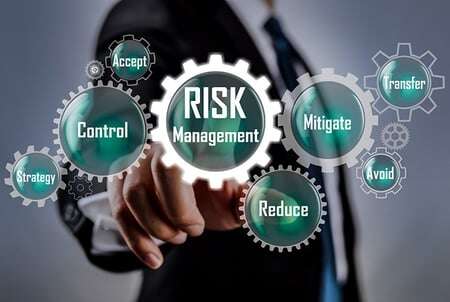On-Site Risk Management
Many organizations benefit from a variety of administrative and technical support to help line management and professionals deal with their day-to-day safety needs. If the available guidance has informational gaps, affected personnel/groups will tend to develop their own strategies and practices to deal with each situation in a way that works for them. However, there are times when the formal and informal safety information systems are inadequate to deal with technical, administrative, or compliance requirements because specialized knowledge is needed.

The decision to use a process safety consultant to fill information gaps is an important one that many managers, engineers, and chemists need to make at various stages in their career. The purpose of this article is to present guidelines to facilitate this decision making process.
How Do You Know if You Need an On-Site Assessment/Survey?
The need for a process safety consultant can stem from any of the following issues:
- Subject matter expert knowledge and experience is needed to observe operations and make independent recommendations in an unbiased manner for a specific engineering/technical issue.
- Engineering expertise for a variety of technical issues that arise throughout a facility or process lifecycle (e.g., design, operation, management of change) is needed to ensure there is a basis of safety for hazards where there is a potential for unacceptable consequences. Examples of hazards where mitigation is often warranted are:
- Management has become aware of a cluster of incidents or near-misses at one or more sites and needs an independent, authoritative opinion as to whether the causal analysis and preventative actions put into place are adequate to prevent reoccurrence.
- Expertise in facilitating or leading process hazard analyses (PHA) within a team environment, by adding specialized and expert knowledge to identify likely process deviations, recognize existing safeguards, and develop practical and cost-effective recommendations as needed to bridge safety gaps.
- Compliance with the a variety of standards such as, Occupational Safety and Health Administration (OSHA) or National Fire Protection Association (NFPA) standards, e.g., OSHA Process Safety Management Standard (PSM) 29 CFR 1910.119 Process Safety Management of Highly Hazardous Chemicals; NFPA Standard 654: Standard for the Prevention of Fire and Dust Explosions from the Manufacturing, Processing, and Handling of Combustible Particulate Solids, 2013 Edition.
Safety Assessments/Surveys
Desktop reviews
Some projects do not need an on-site assessment because they have a limited scope but there is a need for an independent third party assessment. This type of assessment requires the client to supply adequate process safety information to allow for a proper assessment of the critical issues and to determine the basis of safety for each hazard. The scope and requirements for each project are summarized in a proposal to the client. After the assessment has been completed, a final report is issued, with recommendations, as appropriate.
On-site assessments
The scope and timing of the project is determined by the client in discussions with a senior consulting engineer and/or a Risk Management Services group and formalized in a proposal for engineering services. Key documentation and the processes are reviewed on site. A typical agenda would include an opening meeting, facility/equipment walk-through to make observations, interviews as needed to verify records and documentations, and a closing meeting to review highlights. A complete and comprehensive report containing all site observations, measurement results (if taken), and recommendations with interpretations to provide for safer operation is ideal.
Process Safety Integration and Leadership
Seek leaders in process safety testing and consulting. Look for a one-stop source for all your process safety assessment requirements. Your choice should include an organization where process safety consulting engineers possess a wide variety of skills and experience in conducting safety assessments for all facets of industrial operations. Scope of involvement can vary from a single, specific issue at one facility to working on multiple issues at a variety of sites on a national or global basis.
A significant advantage in partnering with an engineering testing lab such as Fauske & Associates (FAI) is that FAI is an ISO/IEC 17025 and ISO 9001 accredited organization, with a fully integrated consultancy that includes comprehensive laboratory services offering standardized and customized testing in the following areas:
- Combustible Dust
- Flammability
- Electrostatics
- Chemical reaction calorimetry for heat balances and scale-up studies
- Emergency vent reactivity testing (adiabatic calorimetry) for emergency vent design using DIERS calculations including API fire-sizing
- UN-DOT transportation testing
This integrated approach allows for a seamless transition from research and development and material testing to practical solutions for our clients’ process safety needs.